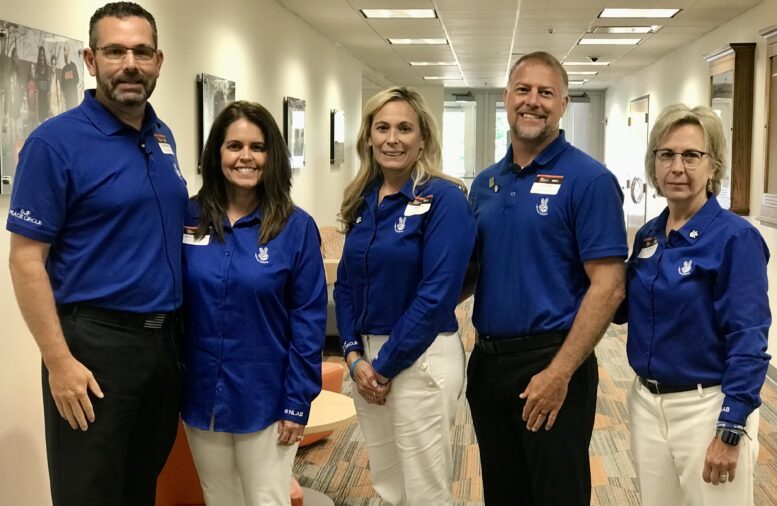By DAVID DUPONT
BG Independent News
The family of Stone Foltz returned to the BGSU campus Tuesday to take part in the second Ohio Anti-Hazing Summit.
The summit was launched by Bowling Green State University in response to the trauma of the March 2021, death of Foltz, a 20-year-old sophomore by alcohol poisoning induced in a hazing ritual.
Last year when the inaugural summit was held, the Foltz family did not attend. They were involved in civil litigation against the university over their son’s death. That’s been resolved. Part of the settlement was an agreement that the university would partner with the Foltz family to end hazing.
[RELATED: After $2.9 million settlement, Foltz family & BGSU to work together to end hazing]
“We have a shared commitment to eradicate hazing on not just the Bowling Green campus, but on all sorts of university campuses here in Ohio and across the nation,” BGSU President Rodney Rogers said, echoing the sentiments he expressed at the inaugural summit.
Asked about what was needed to eliminate hazing, Stone’s father Cory Foltz said: “What we’d like to see is what President Rogers is doing. He’s taking the lead at moving forward instead of sitting back and waiting for more things to happen. He is gathering his team and everyone in Ohio. … If we’re going to make something happen, you need the person at the top to take the charge.”
The conference was attended by more than 200 college professionals from 40 organizations from throughout Ohio as well as Indiana, Pennsylvania, and Michigan.
That included five representatives, including his parents, of the Iamstonefoltz Foundation.
All were set to address the summit, which was closed to the public.
There’s much more the public needs to know about the issue, said DJ Williams, Stone’s aunt. “We’d like to push that into the high schools because we believe there needs to be more education, not only on hazing, but on alcohol. We know Stone didn’t know a lot about that nor did his (fraternity) brothers in terms of getting help.”
“We’re all about prevention instead of being reactive after an accident happens or someone’s life is taken,” Stone’s mother Shari Foltz said. “That’s why we’re here today gathering everybody involved.”
“We have seen an increase in reporting,” Rogers said.
In some cases, he said, the reports show a need for more education to “make sure that we get things back on track.”
In other cases, though, stronger action must be taken. That was the case with two fraternities that have been suspended and one sorority banned since the Foltz’ death.
In the end, though, Rogers said, the university would prefer to spend the time educating students to avoid having to later penalize them.
Roger said he feels hopeful “when Greek leaders come to me and say how do we help the student body understand the important things we are doing. That’s a sign to me that the leadership of these groups need to understand the positive aspect of being part of a student organization, whether it be Greek life or some other student organization.”
Much of the change is driven by the state’s adoption of Collin’s Law in two years ago.
The law was named for Collin Wiant who died in a hazing incident at Ohio University in 2018. Similar legislation had passed the Ohio House but stalled out in Senate Committee. Passage got added impetus after Foltz’s death.
It is, as Chancellor of Higher Education told the summit, “a very aggressive approach.”
The Inter-university council, which includes the presidents of Ohio’s state universities, created their own framework to deal with hazing.
The attendance by scholars and researchers from other states, Rogers said, shows people are watching what is happening in Ohio.
The concern, Rogers said, is that students spent part of their high school years under pandemic restrictions. “My one worry is that there’s group of students who are yearning to be very involved and engaged because they didn’t have those experiences. We want to make sure they have been educated and are confident so they do what they want to and not be coerced into activities that might not be appropriate.”
While launched at BGSU, the summit is the “Ohio” Anti-hazing Summit. The intent, Rogers said, has been for other campuses to host it.
Next summer it will be presented at Ohio State University. He hopes it future years it will be presented in all the regions in the state.

